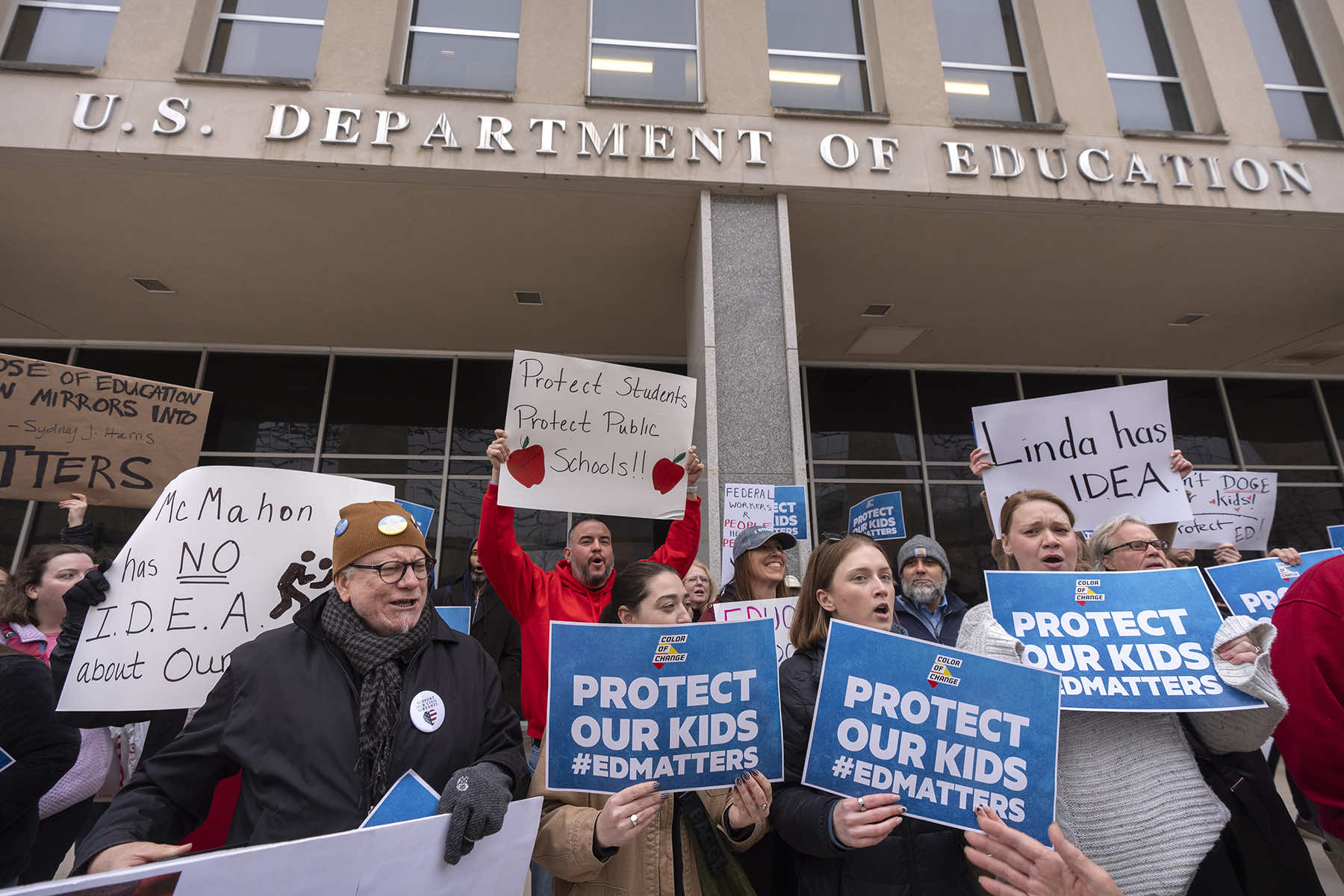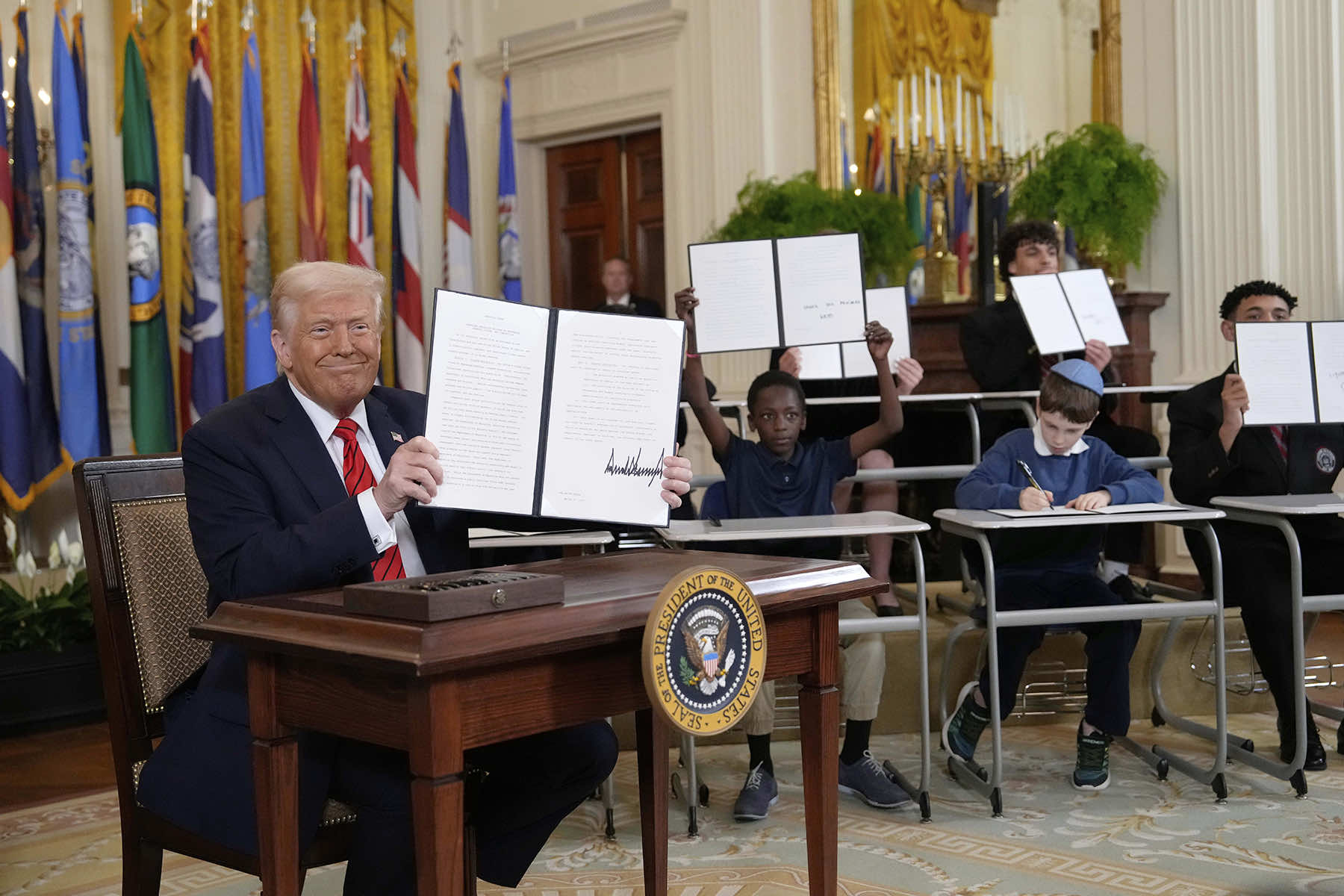
“It sounds strange, doesn’t it? Department of Education. We’re going to eliminate it … Should I do this?” – President Trump, after signing an Executive Order to eliminate the Department of Education on March 20, 2025
There has been a lot written and said recently about the attempt to shut down the Department of Education (DOE). I will not even go into the fact that only Congress has the power to shut down agencies of the federal government.
The Department of Education was created in October 1979 under the auspices of President Jimmy Carter. The Reagan administration started to attack the new agency almost immediately, calling it wasteful.
There will obviously be devastating consequences across the country if this plan goes through.
The local impact will not be shared equally. Milwaukee Public Schools (MPS) depends on DOE funding at a rate significantly higher than any of the suburban school districts in the metro area. According to data from the Wisconsin Department of Public Instruction, MPS receives 20 percent of its funding from the DOE.
That amount is significantly more than any other school district in the metro area. By comparison, the following percentages are for local suburban school districts: Whitefish Bay 2%, Shorewood 3%, Franklin 3%, Greendale 4%, Wauwatosa 5%, Greenfield 6%, Brown Deer 7%, and South Milwaukee 8%.
On average, Wisconsin Schools receive about ten percent of funding from the DOE. MPS gets more, due to a variety of factors which include but are not limited to tremendous transportation and special education funding and the costs of heating, cooling, and maintaining much older school buildings.
Based on available data, MPS will lose over $146 million in funding if the DOE is eliminated. That does not include the nearly $49 million in lost funding from cuts at the USDA for feeding children in the largest school district in the state.
Altogether, MPS is going to lose nearly $195 million in funding if this elimination of the DOE goes through and is approved by Congress. MPS will lose nearly ten times as much funding from the DOE as all of the districts above combined, all of the others listed combined total $15.7 million.
The GOP will need Democrats in the Senate to vote with them to achieve the 60 votes needed to eliminate the DOE. Let us hope they take a different path than they recently did with the latest GOP spending bill to stave off a government shutdown.
I am a former MPS teacher, with many friends still teaching in the district. I am so upset by this possibility, and so should anyone who has earned their education in Milwaukee’s public school system.
“I say to you quite frankly that the time for racial discrimination is over … No poor, rural, weak, or black person should ever again have to bear the additional burden of being deprived of the opportunity for an education, a job, or simple justice.” – Jimmy Carter, Inaugural Address as Governor of Georgia, January 12, 1971
For background, the Department of Education oversees a broad range of programs that extend beyond direct funding streams for school districts. Title I grants, for example, support schools with high numbers of students from low-income families by allocating resources for essential academic support and supplemental services.
While the earlier material does not mention Title I by name, it is a well-documented component of the agency’s budget and an important source of equitable assistance for districts nationwide.
For students pursuing higher education, the department manages Pell Grants and other financial aid programs that help many complete a postsecondary degree without incurring substantial debt. Eliminating these programs would have a ripple effect not only on K-12 institutions but also on colleges and universities that depend on federal aid to keep tuition accessible.
Another aspect seldom noted in public discussions is how the Department of Education addresses civil rights matters in schools.
Its Office for Civil Rights is tasked with ensuring that institutions receiving federal dollars do not discriminate based on race, color, national origin, sex, age, or disability. This includes enforcing Title IX, which protects students from discrimination in sports and other educational opportunities.
Losing a centralized authority for these protections raises concerns about how swiftly and uniformly complaints might be handled if the agency were dismantled.
Additionally, federal teacher-training grants, often distributed through the department, focus on professional development and retention of qualified educators. For districts that already struggle with staffing shortages, the absence of this support could mean fewer opportunities for teachers to enhance their skills.
This is especially concerning for communities where competition for qualified personnel is high and recruitment incentives are limited.
While the immediate effect is frequently calculated in dollars, the broader implications may take years to unfold. School districts that rely heavily on federal partnerships to maintain equitable learning conditions and modern facilities would likely face an uphill battle, and higher education institutions might be forced to scale back affordability measures.
Taken together, these potential outcomes underscore the wide-ranging responsibilities the DOE fulfills and highlight the complexity of trying to dismantle a federal entity that touches nearly every aspect of American learning, from kindergarten classrooms to college campuses.
© Photo
Mark Schiefelbein (AP), Peter Bregg (AP), and Ben Curtis (AP)

















